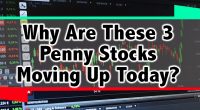Most trading applications used to trade penny stocks, such E*TRADE and TD Ameritrade, charge commission fees for stock trades to make money. Yet, Robinhood is
Brief History Of Free Penny Stock Apps
The Robinhood trading app launched in 2014 and was a big hit from the start due to its lack of commission fees. While most other trading applications charge anywhere in the realm of $1 to $7 per trade, Robinhood charged zero. Being that this penny stock trading app was what you may call the new kid on the block, it did lack much of the data that other trading platforms were providing. But, Robinhood ended up using this as an advantage. The company claimed information provided by these other apps was not worth what was charged in fees.
Robinhood, like most stock trading apps, generates interest on the cash sitting in their customers’ accounts. The penny stock trading app also generates cash by charging $10 on every phone transaction and assists in some foreign trades for that generates anywhere from $35-$50.
Another way this penny stock trading app makes money is by earning rebates for each dollar traded according to Robinhood co-founder and co-CEO, Vlad Tenev, “The revenue we receive from these rebates helps us cover the costs of operating our business and allows us to offer commission-free trading. Robinhood earns ~$0.00026 in rebates per dollar traded. That means if you buy a stock for $100.00, Robinhood earns 2.6 cents from the market maker. Other brokerages earn rebates and charge you a per-trade commission fee.
How Does Revenue Get Generated?
According to Bloomberg, Robinhood generates more than 40% of its revenue from payment for order flow. What this means is that this penny stock trading app sends orders to market makers that assist their customer to receive better execution quality and pricing on their trades, according to their website. Also, the website details that the revenue received from rebates is what helps to cover the costs which allows them to offer commission-free trading.
Robinhood also generates some cash by offering a premium version of its penny stock trading app. Robinhood Gold gives its customers extra buying power, or buying on margin, in tiers and charges a monthly fee to utilize this service.
Although Robinhood is one of the newer trading apps, it has become a favorite to trade some of the best penny stocks commission-free. However, something to consider is that that Robinhood only ties into major exchanges and does not support the over-the-counter (OTC) or Pink Sheets markets, which is home to some of the top penny stocks out there. It’s still too early to tell The whether or not Robinhood’s business model can survive long-term, but if it proves possible this may open up the doors to a new commission-free penny stock trading world.







